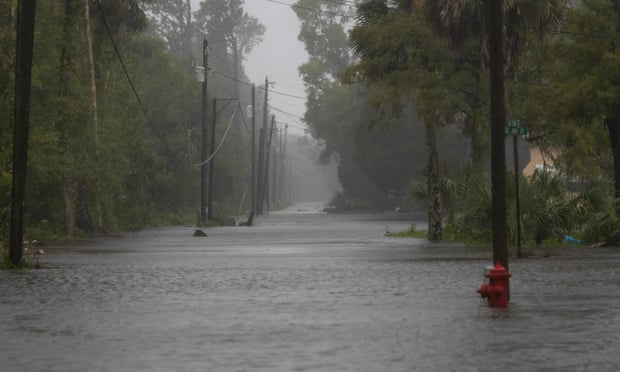 A recent California appellate court ruling overturned a long-held understanding and application of business income policies in situations where an insured that was completely shut down after an insured event was projected to operate at a net loss during the period of restoration. The ruling will potentially have an impact on Calif. insurers and insureds, and it may also have an impact on claims outside of the state.
A recent California appellate court ruling overturned a long-held understanding and application of business income policies in situations where an insured that was completely shut down after an insured event was projected to operate at a net loss during the period of restoration. The ruling will potentially have an impact on Calif. insurers and insureds, and it may also have an impact on claims outside of the state.
In Amerigraphics, Inc. v. Mercury Casualty Company, the insured suffered flood damage to its leased premises and printing equipment and made a claim for its continuing operating expenses during the period of restoration. An analysis of the insured's operating history and other information regarding anticipated sales determined that absent the flooding, Amerigraphics' operating expenses would have exceeded revenues resulting in a projected operating loss of approximately $159,000. The actual operating results during the period of restoration produced an operating loss of approximately $47,000. Based on these projections and actual results, Mercury determined that the insured had not suffered a business income loss because the actual operating loss was less than the projected operating loss and that the actual restoration period operating expenses were less than the projected operating loss.
Faulty Interpretation
The claim and other issues were not resolved to Amerigraphic's satisfaction, and a lawsuit was filed against Mercury. As to Mercury's interpretation of the business income policy, a pre-trial judicial determination ruled that Mercury's evaluation was incorrect and that the projected operating loss should not have been offset against the actual continuing operating expenses. The court ruled that the insured should have been paid its actual restoration period operating expenses and that the projected operating loss should have been ignored. The ensuing appeal asked for clarification of the policy language of the business income coverage.
The California appellate court determined that the lower court was correct, and that the business income coverage — ISO Form 0030 — is actually two separate coverages instead of a single coverage for both net income and continuing normal operating expenses. The ruling held that the components of business income of:
- Net income (net profit or loss before income taxes) that would have been earned or incurred;
- and continuing normal operating expenses incurred, including payroll, were to be viewed separately.
An insured was entitled to recover its continuing normal operating expenses and, if the company was expected to operate at a net profit, it could also recover this additional amount in recognition of the net income portion of the policy. However, the court further ruled that if an insured was expected to operate at a loss during the period of restoration, then the net loss should be ignored, as the policy only allowed for the additional recovery of net income, not the recognition of a net loss.
The primary reason that the court rendered this conclusion is that if an operating loss were included in the business income loss determination, then an insured would be denied benefits from the policy for coverage of its normal continuing operating expenses. The court held that a typical insured would have expected coverage for its operating expenses and for net profits, but that it would never have expected that a projected operating loss would reduce its coverage for continuing operating expenses.
Interpretations prior to this ruling had held that business income was a single coverage and that a projected operating loss would be recognized by subtracting it from continuing normal operating expenses. This interpretation is supported by the National Underwriter Company in its FC&S Bulletins that provide guidance to insurance adjusters on issues they face in applying policy language to situations that arise in various claim situations.
FC&S's discussion of net operating losses cites two legal cases that reach the conclusion that a projected operating loss should be subtracted, or offset, against actual loss period continuing normal operating expenses. These cases are Liberty Mutual Insurance Co. v. Sexton Foods Co., a 1993 Ark. case and Continental Insurance v. DNE Corp., a Tenn. case that was decided in 1992.
In Liberty Mutual v. Sexton Foods, the court essentially held that business income is calculated by adding the net income to continuing operating expenses and if “…net income is a positive number (which will occur whenever there are net profits), the amount of business income will be the sum of two positive numbers, and the insured will be entitled to recover that amount. If, however, net income is a negative number (which will occur whenever there is a net loss), then the amount of business income will be the amount of continuing normal expenses reduced by the amount of the net loss. If the amount of the net loss that would have been incurred had there been no business interruption exceeds the amount of the normal operating expenses actually incurred, then the resulting number is a negative number, and there can be no recovery for an actual loss of business income.”
 The Tenn. case, Continental Insurance v. DNE Corp. succinctly stated that ignoring a net loss (that is, not offsetting it against continuing normal operating expenses) “…would put the insured … in a better economic position from having its business interrupted…” than if no loss had occurred.
The Tenn. case, Continental Insurance v. DNE Corp. succinctly stated that ignoring a net loss (that is, not offsetting it against continuing normal operating expenses) “…would put the insured … in a better economic position from having its business interrupted…” than if no loss had occurred.
Until now, this approach had been universally accepted as a proper application of the policy language and was consistent with the concept of indemnity, as it put an insured in the same economic position it would have been in had the insured event not occurred. This contrasts with this new Calif. ruling, which dismissed these prior rulings by simply stating “…we are not bound by out-of-state authorities,” and now has the effect of improving an insured's economic position in cases where they were expected to operate at a loss.
To see the impact of this ruling, refer to Figure 1.
As you can see, these are vastly different outcomes that arguably create an inequity to the insurance carrier and all other insureds whose businesses would be projected to operate at a net profit during a restoration period. The insurers now have to pay an insured in excess of what the insured would have earned on their own with the effect of improving their financial position.
This improved financial position occurs because if the insured had been operating at a loss–as Company B has in the above example–then the insured would have had to fund this operating loss either from previously earned profits (retained earnings) or by a new investment of funds by the owners. By having an insurer pay for its operating losses during a time that the company would otherwise have to pay it themselves clearly improves its financial position.
The Gross Earnings Form
It is also instructive to understand that another form of business interruption insurance avoids this issue and is generally viewed as providing an insured with the same protections as the Business Income form. This other coverage is known as the Gross Earnings form, and it simply requires a deduction of variable, or saved costs, from lost revenue during the period of restoration. Using the examples shown above, for both Companies A and B, the amount of gross earnings is calculated as sales of $250,000, less cost of goods sold of $75,000, resulting in gross earnings of $175,000, which in this example it is the same as gross profit. Under this coverage, if continuing costs exceed the gross earnings amount, then the insured is left to cover any shortfall from the insurance reimbursement to pay for these expenses as they had been with a business income form prior to the Amerigraphics decision.
As in all contracts, insurance companies that issue business income policies in Calif. can do what they believe is best for themselves and their insureds. They can either keep the coverages unchanged from what they are now, and have them interpreted under the Amerigraphics guidelines, or they can change the current policy language so they can be interpreted the way they have been since business income forms were first issued.
The impact of this ruling is difficult to accurately gauge at this point. The Calif. judges specifically ignored the previously decided cases from both Tenn. and Ark. with identical policies. This could leave Calif. isolated with the Amerigraphics interpretation, or it could lead to a new standard of applying the policy language nationwide. It will be interesting to see if insurers start to make changes in their policies, or if they wait to see future rulings before they respond.
Richard Holstrom, CPA/CFF, CFE, is a partner with the international forensic accounting firm, RGL Forensics. As the forensic accountant engaged by Mercury Insurance Company in the Amerigraphics matter, he is well-acquainted with the case. He may be reached at 619-236-0377, or at [email protected].

Want to continue reading?
Become a Free PropertyCasualty360 Digital Reader
Your access to unlimited PropertyCasualty360 content isn’t changing.
Once you are an ALM digital member, you’ll receive:
- Breaking insurance news and analysis, on-site and via our newsletters and custom alerts
- Weekly Insurance Speak podcast featuring exclusive interviews with industry leaders
- Educational webcasts, white papers, and ebooks from industry thought leaders
- Critical converage of the employee benefits and financial advisory markets on our other ALM sites, BenefitsPRO and ThinkAdvisor
Already have an account? Sign In Now
© 2024 ALM Global, LLC, All Rights Reserved. Request academic re-use from www.copyright.com. All other uses, submit a request to [email protected]. For more information visit Asset & Logo Licensing.








